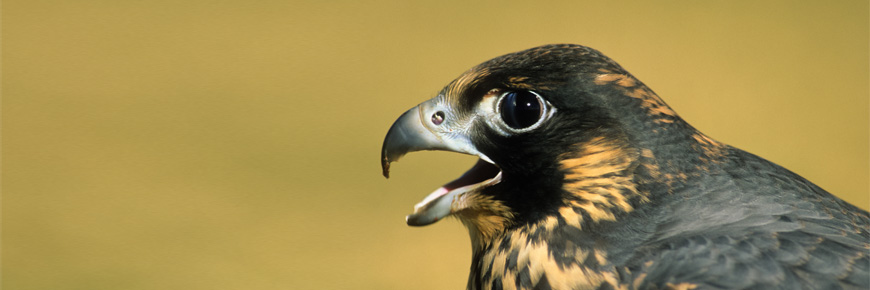
Peregrine falcon (Falco peregrinus)
Pukaskwa National Park
Peregrine falcons are predatory birds renowned for their grace and speed in the air. They are blue-gray in color on the back, rump, and upper surface of the wings, as well as on the crown. The dark feathers on the head resemble a hood with chinstraps. The throat is white and the white underside is speckled with dark horizontal bars. Like other falcons, the peregrines have a tooth-like projection on the upper half of their sharp hooked bill.
Peregrines are famous for their aerial hunting techniques. They dive at their bird prey from great heights, attacking at speeds that can exceed 300 km/h. Prey are usually disabled or killed instantly in the air by a single blow from the clenched talons. Smaller birds may be snatched from the air, while larger birds may be allowed to tumble to the ground. Peregrines have special baffles in their nostrils, which allow them to breathe during their high-speed dives.
Peregrine falcon status in Pukaskwa
Beginning in the late 1940s, peregrine falcon suffered a rapid decline through much of its range, largely as a result of the widespread use of the pesticide DDT. By the 1960s, they were no longer found in Ontario. From 1989 to 1996, captive bred birds were re-introduced to the north shore of Lake Superior. Pukaskwa National Park first noticed a return of peregrine falcons in 1998, when one adult was observed. Breeding was first confirmed in 2000 and, since then, breeding has been observed every year. Ecologists now believe the population is small but steadily increasing.
Related links
- Date modified :